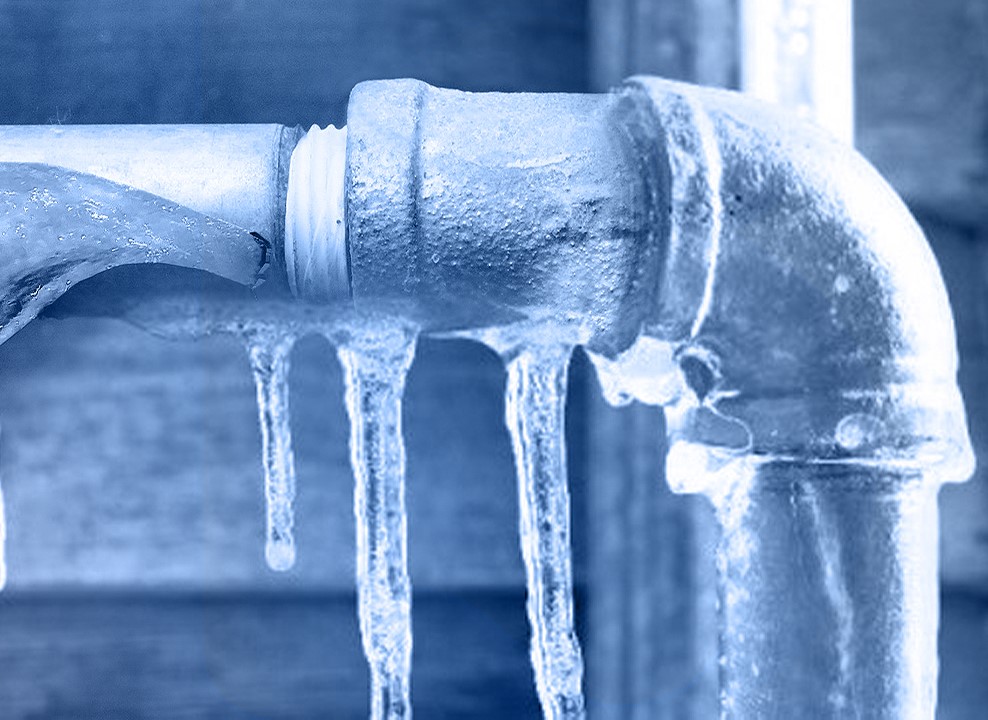Protecting Against Frozen Pipes in Cold Weather: Key Tips
Protecting Against Frozen Pipes in Cold Weather: Key Tips
Blog Article
This post below on the subject of 6 Ways to Prevent Frozen Pipes is exceptionally captivating. You should take a peek.

Cold weather can wreak havoc on your plumbing, especially by freezing pipes. Right here's exactly how to avoid it from occurring and what to do if it does.
Intro
As temperature levels decline, the threat of icy pipes increases, potentially leading to costly repairs and water damages. Understanding just how to avoid icy pipelines is essential for home owners in chilly environments.
Recognizing Frozen Pipelines
What triggers pipelines to ice up?
Pipelines ice up when exposed to temperatures listed below 32 ° F (0 ° C) for extended durations. As water inside the pipelines freezes, it increases, taxing the pipe walls and possibly triggering them to burst.
Threats and damages
Frozen pipes can result in water disruptions, building damages, and pricey fixings. Ruptured pipelines can flooding homes and trigger substantial structural damage.
Signs of Frozen Pipeline
Identifying frozen pipelines early can prevent them from bursting.
Just how to identify icy pipelines
Search for decreased water flow from taps, uncommon smells or noises from pipelines, and visible frost on exposed pipelines.
Prevention Tips
Insulating prone pipelines
Wrap pipelines in insulation sleeves or use heat tape to shield them from freezing temperature levels. Concentrate on pipes in unheated or exterior locations of the home.
Heating methods
Keep interior spaces appropriately heated, specifically locations with pipes. Open cabinet doors to permit cozy air to flow around pipes under sinks.
Securing Outside Pipes
Garden hose pipes and outside faucets
Detach and drain pipes garden hoses before winter months. Install frost-proof spigots or cover exterior faucets with insulated caps.
What to Do If Your Pipes Freeze
Immediate activities to take
If you believe frozen pipelines, keep taps open up to ease stress as the ice thaws. Use a hairdryer or towels taken in hot water to thaw pipelines slowly.
Long-Term Solutions
Architectural modifications
Take into consideration rerouting pipes far from outside walls or unheated areas. Include additional insulation to attic rooms, basements, and crawl spaces.
Upgrading insulation
Purchase top notch insulation for pipes, attics, and wall surfaces. Appropriate insulation aids preserve constant temperature levels and reduces the threat of frozen pipelines.
Conclusion
Protecting against frozen pipelines calls for proactive steps and quick responses. By understanding the causes, indicators, and safety nets, property owners can shield their pipes throughout cold weather.
6 Proven Ways to Prevent Frozen Pipes and Protect Your Home
Disconnect and Drain Garden Hoses
Before winter arrives, start by disconnecting your garden hoses and draining any remaining water. Close the shut-off valves that supply outdoor hose bibs and leave the outdoor faucet open to allow any residual water to drain. For extra protection, consider using faucet covers throughout the colder months. It’s also important to drain water from any sprinkler supply lines following the manufacturer’s directions.
Insulate Exposed Pipes
Insulating your pipes is an effective way to prevent freezing. Pipe insulation is readily available at home improvement stores and is relatively inexpensive. Pay close attention to pipes in unheated areas such as the attic, basement, crawl spaces, or garage. Apply foam insulation generously to create a buffer against the cold. You can also wrap your pipes in heat tape or thermostat-controlled heat cables for added warmth.
Seal Air Leaks
Inspect your home for any cracks or openings that could let in cold air. Seal any holes around the piping in interior or exterior walls, as well as the sill plates where your home rests on its foundation. Additionally, make sure to keep your garage door closed unless you’re entering or exiting. Leaving it open creates a significant air leak that can lead to frozen pipes.
Allow Warm Air Circulation
During cold snaps, it’s essential to allow warm air to circulate evenly throughout your home. Leave interior doors ajar to promote better airflow. Open kitchen and bathroom cabinets to help distribute heat consistently around the rooms. If you have small children or pets, be sure to remove any household chemicals or potentially harmful cleaners from open cabinets for safety.
Let Faucets Drip
A small trickle of water can make a big difference in preventing ice formation inside your pipes. When temperatures drop significantly, start a drip of water from all faucets served by exposed pipes. This continuous flow helps prevent the water from freezing. Additionally, running a few faucets slightly can relieve pressure inside the pipes, reducing the chances of a rupture if the water inside does freeze.
https://choateshvac.com/6-proven-ways-to-prevent-frozen-pipes-and-protect-your-home/

Do you enjoy more info about How To Avoid Freezing Pipes? Try to leave a remark directly below. We'd be glad to see your ideas about this write-up. We hope that you visit us again before long. If you liked our blog entry plz be sure to pass it around. Thanks a lot for going through it.
Booking Page Report this page